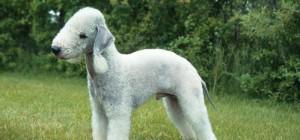 Adding a dog to your family is a major decision and commitment, especially when a prospective owner has pet allergies.
Adding a dog to your family is a major decision and commitment, especially when a prospective owner has pet allergies.
There is no dog breed that is truly non-allergenic. There are some dogs that are considered to be hypoallergenic (meaning less allergenic), and/or low-shedding or low-dander. The AKC (American Kennel Club) has a Dogs and Allergies page on their website that lists dog breeds they recommend as “ideal for allergy sufferers.” The Dog Breed Information Center has a more extensive hypoallergenic list with detailed breed links and information. They also have a Dog Breed Info Center Search page where you can take a helpful dog compatibility test.
Dog breed websites are interesting and informative, but not always 100-percent accurate. Each dog and dog owner are unique. Many of the dogs on the hypoallergenic lists are high maintenance and NOT for the novice pet owner! Cute puppies can grow into rambunctious and destructive adolescents; grooming can be unexpectedly expensive and time-consuming; a dog’s coat can change as it matures and trigger an allergic reaction in its owners. Hypoallergenic dogs are often re-homed, given to shelters or worse.
Take the Portuguese Water Dogs. President Obama has the famous one named Bo. This dog chewed a reporter’s $3000 microphone and then raced across the White House lawn to hide the evidence in the garden. Porties, like many other dogs on the hypoallergenic dog list, are very intelligent and high-energy. If their owners don’t provide enough mental stimulation and physical exercise, they will find a way to get it!
The hypoallergenic breeds most frequently choosen are the Poodle (all sizes), Bichon Frise, Maltese, Yorkshire Terrier, Miniature Schnauzer, Shih Tzu, Lhasa Apso and West Highland White Terrier. In the past 10 years, there has been a huge increase in the breeding and ownership of “poodle-hybrid” dogs like the Labradoodle, Goldendoodle, Cockapoo, Malti-Poo, and Shih-Poo.
It has become very popular for a breeder to cross the low-shedding poodle with another purebred dog in an attempt to offer a “designer” hypoallergenic pet. The Labradoodle was originally bred in 1988 to create a guide dog suitable for people with dander allergies. Cockapoo’s (a Cocker Spaniel and Poodle mix) have been around since the 1960s, but most of the other designer dogs are newer and sometimes unpredictable. Breeders hope for low-shedding puppies with the best traits of both breeds, but this does not always happen. If you are interested in a hybrid dog, be sure to choose a reputable breeder who understands genetics and the health and temperament issues of both breeds and the puppies they produce.
When you have allergies and are looking for a hypoallergenic purebred or hybrid dog, ask a prospective breeder if they will let you “borrow” an adult dog or pay a visit to their home or kennel. If possible, try spending time with a mature dog or the puppies’ parents and relatives before committing to ownership. Remember, a puppy’s coat and temperament can be very different once he grows older.
It is heartbreaking to give up a dog once he has become a member of your family. There are many things you can do to avoid this. Determine if the dog you want is right for you and your living situation before you commit to having him in your life.
